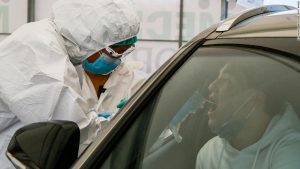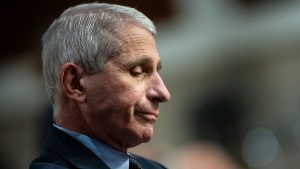Leaders of the Los Angeles teachers union on Friday will call for campuses to remain closed and for distance learning to continue when the school year begins on Aug. 18, The Times has learned. Union leaders have concluded it is not safe to bring children back on campus as COVID-19 cases in Los Angeles County surge to new highs.
The union will also release a report suggesting parameters for reopening will be difficult to meet any time in the near future, although they are in line with what some health experts are recommending.
L.A. school officials have yet to make a decision on reopening, but if it happens, the district would offer two options: a learning-from-home program and a hybrid plan that would combine learning at home with part-time attendance on campus in small socially distanced classes.
Earlier in the week, L.A. County Director of Public Health Barbara Ferrer told school district leaders that they must prepare for the possibility that students would need to continue learning remotely 100% of the time at the start of the school year.
In effect, the teachers union, United Teachers Los Angeles, is calling to go one step further, and make the decision now — giving families and employees time to prepare. The union’s position has been influential on matters pertaining to the pandemic. In March, union leaders demanded that campuses be closed and L.A. schools Supt. Austin Beutner announced that move the next day.
The union is negotiating with district officials over working conditions for the fall.
In a statement to be released Friday, union President Cecily Myart-Cruz acknowledged the shortcomings of distance learning, but said health considerations had to take top priority.
“Educators long to be back in our schools and classrooms. We know that distance learning creates real challenges, but science — not politics or the stock market — must determine when schools restart,” Myart-Cruz said. “We should be using this time to make distance learning better for all, including educators, parents and students.”
In criticizing the politicization of the health considerations, Myart-Cruz singled out President Trump, who this week called for campuses to reopen and threatened to withhold funding from those that did not. The president and his advisors insisted that children would be better off in traditional classes and a regular school schedule would allow parents to return to work, helping families and also providing a necessary boost to the economy.
In making that argument, Trump challenged the safety advice provided by the federal Centers for Disease Control and Prevention as too expensive and impractical, tweeting: “I will be meeting with them!!!” However, the CDC said Thursday they would not revise its guidelines.
Given the surge of the virus in L.A. County, Myart-Cruz called Trump’s threats over funding “alarming.”
“We have to take a stand against this dangerous, antiscience agenda that puts the lives of our members, our students, and all of our families at risk,” she said.
In a Facebook thread this week, union members, who include teachers, counselors, nurses and librarians, expressed their concerns.
“You think I’m safe at 71 going into a classroom of students… or any of my colleagues?” wrote Sandy Dorfman, who teaches at Castlebay Lane Elementary in Porter Ranch. “The air conditioning system will recirculate the sick air throughout the school! Has anyone thought of that? Does anyone think kids are keeping masks on properly? Do you think we can hear elementary kids through masks? All day long kids leaving class to go to the bathroom… touching door knobs — insanity!”
During the pandemic, Marcela Chagoya, a UTLA member and special education teacher at Robert Louis Stevenson College and Career Prep in Boyle Heights, taught her classes remotely while also overseeing her 10-year-old son’s progress at home. In addition, she helps care for her 84-year-old mother, who is on oxygen 24 hours a day, and her 50-year-old brother, who is autistic and nonverbal.
Although she is committed to teaching, she said she cannot risk returning to the classroom.
“It’s not possible to … get them to wear a mask, to get them to not run up and hug each other or hug adults,” she said of students. “Safely reopening is impossible for that specific student population.”
She teaches sixth-graders who have learning disabilities and read at a third-grade level or below. When the pandemic hit, she bought a new laptop with personal funds and spent hours walking students through how to manage their internet browser and Zoom, a video conferencing app that allows her to interact with students live or to post recorded lessons.
“It was not easy,” Chagoya said.
She expects more technological obstacles to come. But she said she doesn’t feel comfortable going back in person. She wants the district to wait a month or more to see whether the curve is flattening and cases are going down.
“I love my kids, and I miss them dearly,” she said, “but there is no way I’ll be able to teach them if I get sick. There’s no way I’ll be able to teach them if they get sick. Or if I get my mom sick.”


















